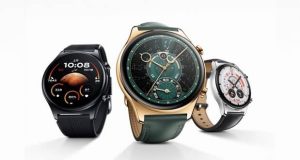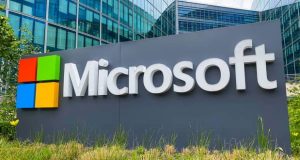مایکروسافت در حال برنامه ریزی برای ارائه نخستین گجت پوشیدنی تناسب بدن خود در هفتههای آینده است. این گزارش نخستین بار توسط Forbes منتشر شد و وبسایت The Verge نیز بلافاصله آن را تأیید کرد.این وبسایت به نقل از منابع خود تأیید کرده که معرفی این گجت نزدیک است و برای فصل تعطیلات در دسترس عموم قرار خواهد گرفت.
اگرچه اسمارت بند مایکروسافت تعدادی از ویژگیهای اسمارت واچها را دارد، اما بیشتر بر روی فعالیتهای تناسب بدن تمرکز خواهد داشت. گفته شده که این اسمارت بند به لطف سنسورهایی که در خود دارد در قدم شماری، ثبت ضربان قلب، میزان مصرف کالری و موارد دیگر کاربرد خواهد داشت.
گجت مایکروسافت همچنین تستهایی را برای مانیتور ضربان قلب در طول 24 ساعت شبانه روز پشت سر میگذارد و نسخه نهایی احتمالا با دو روز عمر باتری ارائه خواهد شد.
ویژگی بسیار مهم این اسمارت بند در پشتیبانی از ویندوزفون، iOS و اندروید است. مایکروسافت در حال تولید اپلیکیشن های جداگانه ای برای سیستم عاملهای مختلف است تا به مدد آنها بتواند خیل بسیار وسیعتری از مشتریان دنیا را در اختیار بگیرد.
بعید به نظر میرسد به دلیل قابل استفاده بودن این گجت پوشیدنی در سیستم عامل مختلف، مایکروسافت آن را تحت برندهایی چون لومیا یا سرفیس به بازار معرفی کند. بر اساس شایعات گذشته این اسمارت بند دارای یک صفحه نمایش 1.5 اینچی با قابلیت جداسازی بند است.
مایکروسافت آخرین بار در سال 2004 یک ساعت هوشمند به نام SPOT را معرفی کرد که با استفاده از سیگنالهای FM به دریافت پیام از ویندوز مسنجر، سرخط خبرها، اطلاعات بازار بورس و پیشبینی آب و هوا اقدام میکرد.
منبع : Forbes
Microsoft Plans To Launch A Wearable Device Within Weeks
Microsoft Plans To Launch A Wearable Device Within Weeks
Microsoft MSFT +2.08% is gearing up to launch a wearable device within the next few weeks, Forbes has learned. The gadget is a smart watch that will passively track a wearer’s heart rate and work across different mobile platforms. It will also boast a battery life of more than two days of regular use, sources close to the project say.
That could put it ahead of Samsung’s Galaxy Gear smart watch and Moto 360 which both need to be charged around once a day. The wearable will hit stores soon after launch in a bid to capture the lucrative holiday season, a timeline Apple AAPL +1.46% was reportedly targeting before it delayed its own Watch to early 2015.
Forbes first reported in May that Microsoft was working on a smart watch that drew on optical engineering expertise from its Kinect division, and which would sync with iPhones, Android devices and Windows Phones. It is unclear what Microsoft will name the device, or what it will cost at retail.
A wearable would mark the company’s first foray into a new device category under CEO Satya Nadella. Wearable tech is still uncharted territory, despite offerings from Samsung and the forthcoming Apple Watch. It’s a market predicted to be worth $7.1 billion in 2015.
Going cross platform is also consistent with Nadella’s drive to make his company’s product offerings available “across all devices”. His launch of Microsoft Office for the iPad in March marked a move away from the company’s Windows-only vision under Steve Ballmer.
The latter strategy would probably be unwise today, now that Windows Phone has just 2.5% of the global smartphone market, according to IDC. On the upside, Microsoft can now target its wearable at more customers than the Apple Watch, which will only work with iOS devices.
With a battery that lasts more than two days, Microsoft could get a leg up on big-name competitors who have entered the wearables space. Battery life is frequently cited as one of most important factors that consumers consider when buying a smartphone, yet the topic was conspicuously glossed over at Apple’s Watch announcement last month. Apple CEO Tim Cook has since revealed the gadget will have to be charged every night, just like the Gear and Moto 360.
Motorola’s Moto 360 smart watch also has a continuous heart rate monitor and has been praised for its stylish design, but the battery tends to last for just 24 hours based on various reviews. Some wearables like the Pebble and Jawbone Up24 boast batteries that last for days or even weeks at a time, but that becomes impossible when a device features a color display like the Apple Watch or Gear.
When it comes to battery life, Microsoft may benefit from its historic expertise in software, allowing it to create sensor integrations that boost the device’s power train efficiency.
Microsoft’s history of launching new hardware is a mixed bag. Its Zune music player wasn’t the success it could have been, and prospects for its Surface tablet still look hazy. But when Microsoft introduced the Kinect for the Xbox 360 in 2011, it became the fastest-selling consumer device on record.
Microsoft’s legacy in machine learning through Microsoft Research could also point to a future business model for a health-tracking device — that is, if it chooses to exploit its close ties with enterprise customers. The company could, for example, promote its wearable gadget and any accompanying cloud-based software as a service for helping to cut healthcare costs, by tracking and incentivizing healthy behavior among workers.
Such “wellness” services are already being shopped by a host of health tracking startups like Pact Health, StickK, WellBe and Jiff, but larger tech firms have yet to jump into the market.
 گجت نیوز آخرین اخبار گجتی و فناوری های روز دنیا
گجت نیوز آخرین اخبار گجتی و فناوری های روز دنیا 






